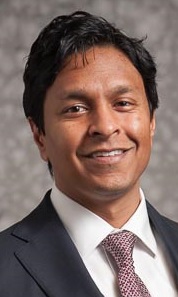by Dr. Arun Mohan MD, MBA
In my last post, I described substantial geographic variation in length of stay. Although it’s not exactly clear what explains the differences, here are 5 key principles that hospitalists should keep in mind:
1) Specialization is important. Research from multiple industries demonstrates that focusing on doing a few things well allows organizations to deliver better outcomes at lower costs. Organizations with narrow focus can build more dedicated facilities, develop more expertise, more effectively standardize care, and learn more quickly. At the hospital level, this may include building centers of excellence or focusing on certain service lines. At the unit level, this might mean developing units for a given condition or type of patient (e.g. elderly). And at the physician-level, this might mean having hospitalists who are focused on certain conditions.
2) Workload can effect efficiency. Studies show that high nurse to patient ratios are not only associated with lower mortality, but length of stay as well. Although we don’t have good data regarding the impact of physician to patient ratios, many hospitalists believe that excess workload caused delays in patient admissions and/or discharges. Developing care models that enable a physician to work at the top of her license through a team-based approach may reduce both workload and length of stay.
3) Lack of continuity may increase length of stay. A study of nearly 11,000 patients in community-based settings with pneumonia and heart failure showed that for every 10% increase in something called a “fragmentation of care index” (% time not delivered by the “primary hospitalist”), length of stay increased by 0.3-0.39 days.
4) Care coordination and discharge planning matter. A 1989 study from Boston Medical Center (and probably not that much different today) showed that the principal barriers to discharge were problems with facility/bed availability followed by problems with test scheduling or surgical procedures. To the extent that hospitals begin the discharge process on day one, length of stay could be decreased. Additionally, hospitals with access to a robust continuum of care should make it easier to discharge early and safely.
5) Providers respond to financial incentives. Although intrinsic motivation (sense of professionalism, curiosity, etc.) are generally more important than extrinsic motivators, the reality is that carefully crafted compensation models can drive performance. Probably the best known experiment of how financing effects length of stay was the switch in 1983 by a little known insurance company (Medicare) from a cost-based to DRG-based system. In the 2 years following, there was nearly a 23% reduction in length of stay. Not bad for a simple swipe of the pen.
I will be the first to admit that these 5 lessons don’t tell the whole story, but the evidence suggests that interventions that incorporate these factors might work to reduce length of stay. Dr. Eric Howell and I will review interventions that we think work at HM14 and we invite you to join us.
And, in the meantime, we’d love to know your experience. What works to reduce length of stay? What doesn’t? What should we do when length of stay is trending in the wrong direction?
 Arun Mohan, MD, MBA, is Chief Medical Officer for Hospital Medicine with ApolloMD, a physician-owned, multi-specialty practice that partners with more than 85 hospitals nationally. He was previously Medical Director of Care Coordination at Emory University Hospital and Associate Vice-Chair for IT in the Department of Medicine at Emory University School of Medicine.
Arun Mohan, MD, MBA, is Chief Medical Officer for Hospital Medicine with ApolloMD, a physician-owned, multi-specialty practice that partners with more than 85 hospitals nationally. He was previously Medical Director of Care Coordination at Emory University Hospital and Associate Vice-Chair for IT in the Department of Medicine at Emory University School of Medicine.
Dr. Mohan will be presenting at Hospital Medicine 2014 as part of the new “Bending the Cost Curve” track on Wednesday, March 26th at 4:15 p.m. He is co-presenting with SHM’s President Dr. Eric Howell MD, SFHM. Their talk is entitled, “Interventions to Reduce Length of Stay in Hospitalized Patients.”



Leave A Comment